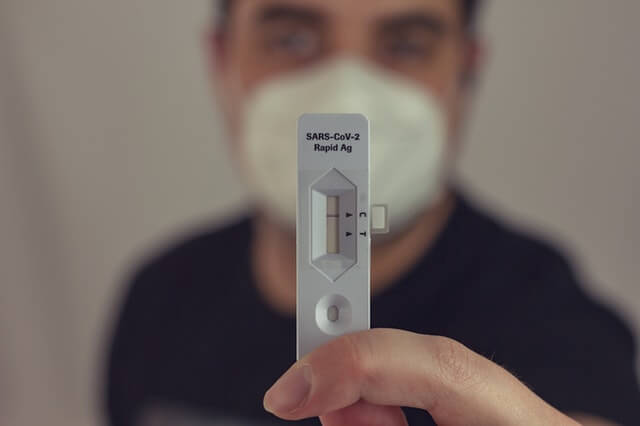This post discusses practices to prevent the spread of COVID-19 in the workplace, including how the disease is transmitted, symptoms of COVID-19, and ways to stay safe and healthy.
Materials to have on hand:
- Hand Sanitizer / Handwashing materials
- Disinfectants and cleaning products in use at the facility
- Required Personal Protective Equipment
- The facility’s emergency preparedness or pandemic plan, if applicable.
Talk
Coronavirus disease 2019, or COVID-19, is a respiratory illness caused by a virus in the group of viruses known as coronaviruses. Other coronaviruses include Middle East Respiratory Syndrome (MERS) and Severe Acute Respiratory Syndrome (SARS). Most cases of COVID-19 are mild, but the disease can become serious, and even become fatal in a small percentage of people who contract the virus. Therefore, it is important to take steps to prevent the spread of infection in the workplace.
According to the World Health Organization (WHO), coronavirus is a family of viruses that cause illnesses ranging from the common cold to more severe diseases. Common signs of infection include headache, fever, cough, sore throat, runny nose, and breathing difficulties. In more severe cases, the infection can cause pneumonia, severe acute respiratory syndrome, kidney failure, and even death. Individuals who are elderly or pregnant and anyone with preexisting medical conditions are at the greatest risk of becoming seriously ill from coronaviruses.
COVID-19 is spread between people who are in close contact with one another and through respiratory droplets that are produced when an infected person coughs or sneezes. It is also possible to get COVID-19 by touching a surface or an object on which a virus-containing respiratory droplet has landed and then touching your eyes, nose, or mouth. According to the Centers for Disease Control and Prevention (CDC), this is not the main way the virus spreads. It may also be possible to spread the virus before developing symptoms.
Because there is currently no vaccine or specific treatment for COVID-19, the best way to prevent illness is to avoid exposure.
CDC Interim Guidance
In order to help employers plan and respond to COVID-19, the CDC has issued interim guidance. The CDC recommendations include:
- Actively encourage sick employees to stay home. Employees who have symptoms of acute respiratory illness are recommended to stay home and not come to work until they are free of signs of a fever and any other symptoms of COVID-19 for at least 24 hours, without the use of fever-reducing or other symptom-altering medicines. What’s more, employees should be instructed to notify their supervisor and stay home if they are sick.
- Separate sick employees. Employees who appear to have acute respiratory illness symptoms (e.g., cough or shortness of breath) upon arrival to work or become sick during the day should be separated from other employees and be sent home immediately. Sick employees should cover their nose and mouth with a tissue when coughing or sneezing.
- Hold the inside of your elbow to your mouth to cover coughs and sneezes. Try to cover your nose and mouth with a tissue when coughing or sneezing and properly dispose of the tissue immediately after use.
- Emphasize hand hygiene. Instruct employees to clean their hands often with an alcohol-based hand sanitizer that contains at least 60%-95% alcohol, or wash their hands with soap and water for at least 20 seconds. Soap and water should be used preferentially if hands are visibly dirty. If using hand sanitizer, apply hand sanitizer in the amount about the size of a quarter to the palm of one hand, rub your hands together, and rub the gel all over the surface of your hands and fingers until your hands are dry. This should take about 20 seconds.
- Avoid close contact with people who are sick. Stay at least 6 feet from infected people, and minimize unnecessary physical contact in general, such as shaking hands. Specifically, avoid contact with our eyes, nose, and mouth. These are points of entry for the virus.
- Perform routine environmental cleaning. Employers should routinely clean all frequently touched surfaces in the workplace, such as workstations, countertops, and doorknobs. Use a commercial disinfectant or a solution of 1 part bleach to 10 parts water.
Additional Information
Although virus transmission is still being studied, it is not likely that you will catch COVID-19 from packages or products that ship from areas where the virus is widespread. Coronaviruses do not survive very long on surfaces and there is no evidence that cases have been contracted this way.
The effectiveness of face masks and other coverings has been a debated topic. Some jobs such as in the healthcare industry may present a higher risk of exposure and it may be determined appropriate by your employer to require you to wear an N95 filtering facepiece mask. If you are required to wear this type of mask or any other respirator as part of your job, your employer will follow OSHA guidelines for respiratory protection to medically qualify you, fittest you and train you. You may choose to voluntarily wear an N95 filtering facepiece mask, but in doing so, you should see your supervisor in order to complete OSHA’s Information Sheet for Voluntary Use of a Respirator.
Finally, it is important to remember that COVID-19 is not associated with any particular nationality or racial group. Although people who live in or travel to affected areas have a higher risk of catching and spreading the virus, anyone who is exposed to the virus may become infected. It is important to avoid stereotyping, making negative remarks, and behaving unkindly to people based on assumptions. The most important thing you can do to protect yourself, your family and your community from COVID-19 is to follow CDC guidance.
Stay Informed
It is important to understand that the COVID-19 situation evolves and changes every day. Employers should closely monitor the CDC and WHO websites for the latest and most accurate information on COVID-19.
For a link to this page on the CDC Website, click here.





